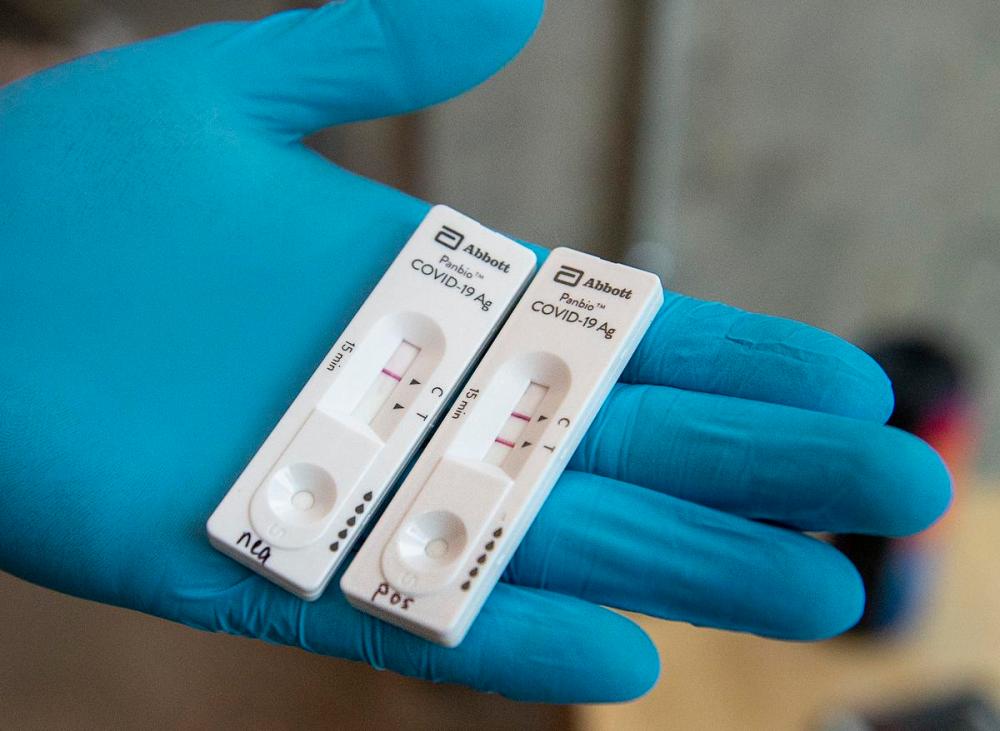Feds to spend more than $1.5B on COVID-19 rapid tests, the Star has learned
Advertisement
Read this article for free:
or
Already have an account? Log in here »
To continue reading, please subscribe:
Monthly Digital Subscription
$0 for the first 4 weeks*
- Enjoy unlimited reading on winnipegfreepress.com
- Read the E-Edition, our digital replica newspaper
- Access News Break, our award-winning app
- Play interactive puzzles
*No charge for 4 weeks then price increases to the regular rate of $19.00 plus GST every four weeks. Offer available to new and qualified returning subscribers only. Cancel any time.
Monthly Digital Subscription
$4.75/week*
- Enjoy unlimited reading on winnipegfreepress.com
- Read the E-Edition, our digital replica newspaper
- Access News Break, our award-winning app
- Play interactive puzzles
*Billed as $19 plus GST every four weeks. Cancel any time.
To continue reading, please subscribe:
Add Free Press access to your Brandon Sun subscription for only an additional
$1 for the first 4 weeks*
*Your next subscription payment will increase by $1.00 and you will be charged $16.99 plus GST for four weeks. After four weeks, your payment will increase to $23.99 plus GST every four weeks.
Read unlimited articles for free today:
or
Already have an account? Log in here »
Hey there, time traveller!
This article was published 14/12/2021 (1455 days ago), so information in it may no longer be current.
OTTAWA — The federal fiscal update contains more than $1.5 billion to buy rapid tests right away, the Star has learned.
The money will go toward buying the tests directly and also helping provinces with the logistics of distributing them, a federal source said on condition of anonymity.
It’s one of the few new spending items that will be included in Tuesday’s fiscal update, which will focus mainly on bringing the books up to date after last spring’s budget.

The goal is to respond to growing requests from provinces to make more use of rapid tests to quickly detect the new Omicron variant, which is highly contagious.
“As you know, provincial and territorial demand for rapid tests is growing,” Health Minister Jean-Yves Duclos said last Friday. “For the last year, these tests were largely underutilized, but for the month of December, provinces and territories have requested around 35 million tests. This is very good news and we will ensure that provinces and territories get these tests in time for the holidays.”
If demand persists into the new year, Duclos said the federal government would be there to help.
There has been widespread indignation that many of the rapid tests have gone to waste in the past, sitting on shelves despite businesses, high-risk settings and public services asking for ways to quickly detect new cases of COVID-19.
Government data show the federal government has already purchased about 100 million rapid tests, but only about two thirds of those have been distributed, and a much smaller fraction actually reported as used.
Once the federal government hands over the rapid tests to provincial governments, it’s up to them how they use them and distribute them. The approach means that in some provinces, rapid tests are plentiful and available to some people for free. In others, it’s next to impossible for the general public to get their hands on a rapid test for personal use.
Duclos said he didn’t want to blame the provinces for sitting on tests in the past, but said there has been a major change in attitude among the provinces recently, and they’re now very keen to get their hands on very large quantities of the tests.
Rapid tests give results in about 15 minutes but they’re not considered as reliable as molecular testing which is done through a lab. Rather, they are useful in indicating whether someone should isolate right away and seek further testing.
Heather Scoffield is the Star’s Ottawa bureau chief and an economics columnist. Follow her on Twitter: @hscoffield


